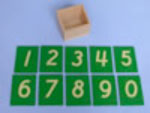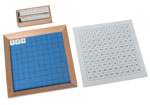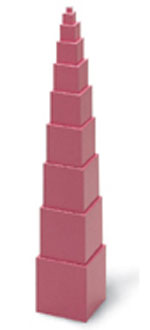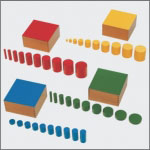
“The child is truly a miraculous being and this should be felt deeply by the educator.”
– Maria Montessori
Dr. Maria Montessori was an amazing woman. She was the first woman in Italy to receive a medical degree. Her ideals and philosophies have had a prolific influence on education around the world. There are more than four thousand Montessori schools in the United Sates and Canada, and thousands more around the world. Her methodologies are global.
Dr. Maria Montessori developed her philosophy of child development in the early 1900’s by observing and interacting with children of varying ages, ethnicity, and socioeconomic status. The first Casa de Bambini, or Children’s House, opened in 1907, in Rome. It quickly became world famous and educators from around the world came to observe her amazing results.
The Montessori approach is to recognize and address a variety of learning styles. Montessori students learn through a hands on approach while incorporating investigation and research. Montessori offers a rigorous academic program.
Montessori ties the separate disciplines, such as language, math, art, zoology, botany, and geography, together into one cohesive curriculum. This integrated approach is one of her great strengths.
Dr. Maria Montessori believed that no human being is educated by another person, but that he must do it for himself, or it will never be done. A truly educated individual continues learning long after the hours of school because she / he is motivated by a natural curiosity and love of knowledge.
Learn more about Maria Montessori and Montessori education
Useful Links:

The purpose and aim of Sensorial work is for the child to acquire clear, conscious, information and to be able to then make classifications in his environment. Montessori believed that sensorial experiences began at birth. Through his senses, the child studies his environment. Through this study, the child then begins to understand his environment. The child, to Montessori, is a “sensorial explorer”. Through work with the sensorial materials, the child is given the keys to classifying the things around him, which leads to the child making his own experiences in his environment. Through the classification, the child is also offered the first steps in organizing his intelligence, which then leads to his adapting to his environment.

In the Montessori classroom, five families with math are presented to the child: arithmetic, geometry, statistics and calculus. More precisely, the concepts covered in the Primary class are numeration, the decimal system, computation, the arithmetic tables, whole numbers, fractions, and positive numbers. Arithmetic is the science of computing using positive real numbers. It is specifically the process of addition, subtraction, multiplication and division. The materials of the Primary Montessori classroom also present sensorial experiences in geometry and algebra.
 The Sandpaper numerals aids in the recognition of numerals 0-9 by incorporating the tactile senses. They also help the child prepare for writing numerals. |
The Number Rods vary in length from 10 cm -100 cm. Each 10 cm section resembles a unit. The rods aid in learning numbers and sequencing them. Children also learn the concept of quantity with in a whole. The number rods also complement the concept of part/whole in mathematics. |
 The Hundred Board is a material that aids in sequencing numbers 1-100 in groups of 10. It is also a concrete example of the quantity of 100 tiles. Children are able to observe patterns in numbers. |

Practical: means basic, useful, purposeful. Life: means the way of living. Practical life Exercises are just that, they are Exercises so the child can learn how to do living activities in a purposeful way.






